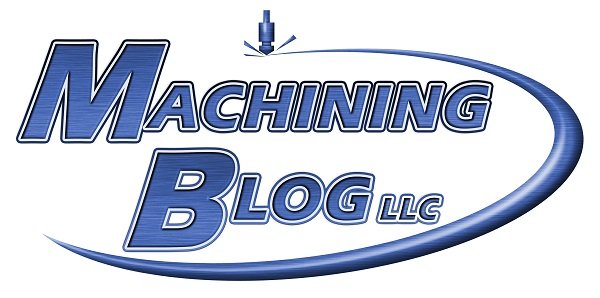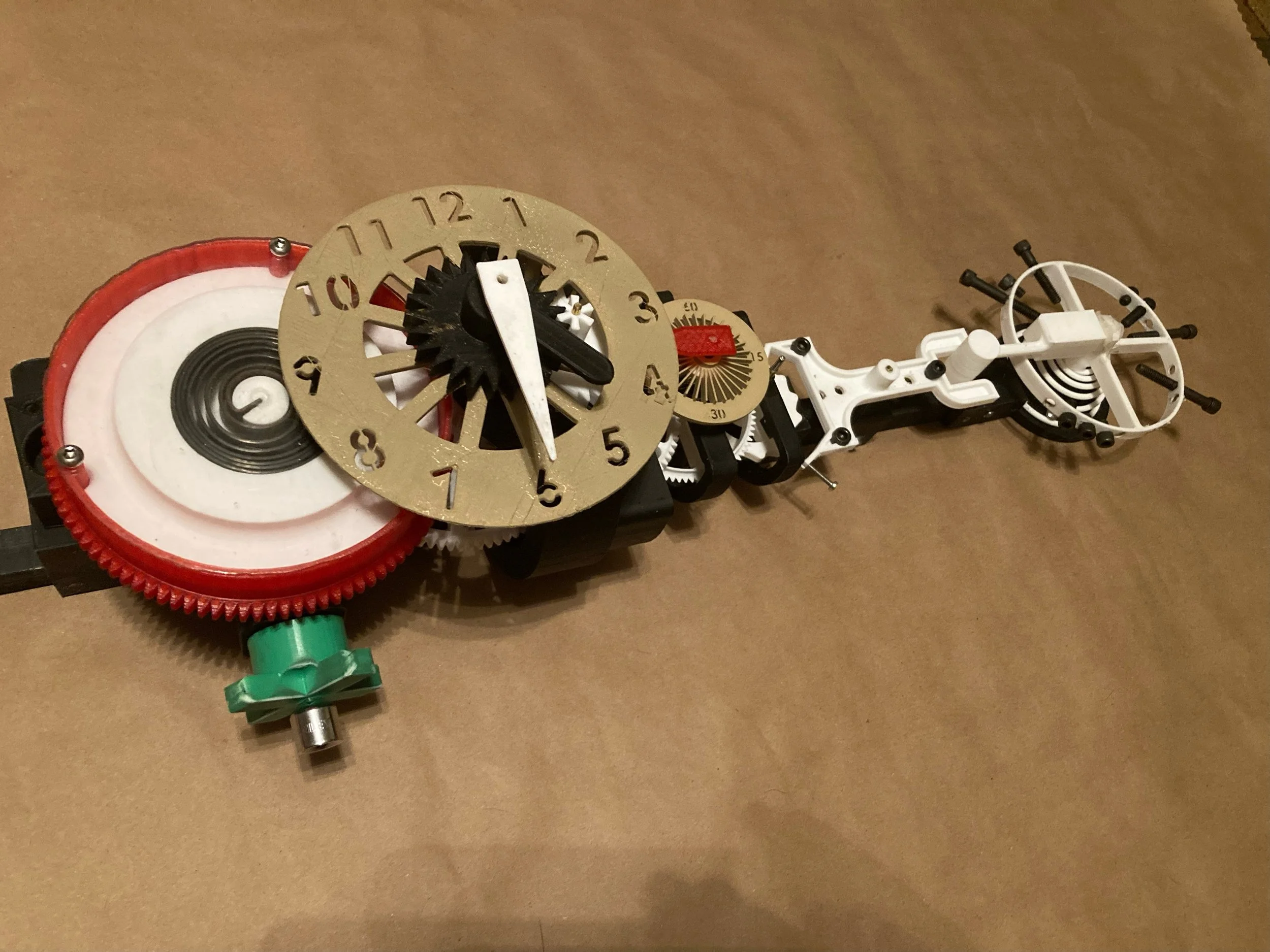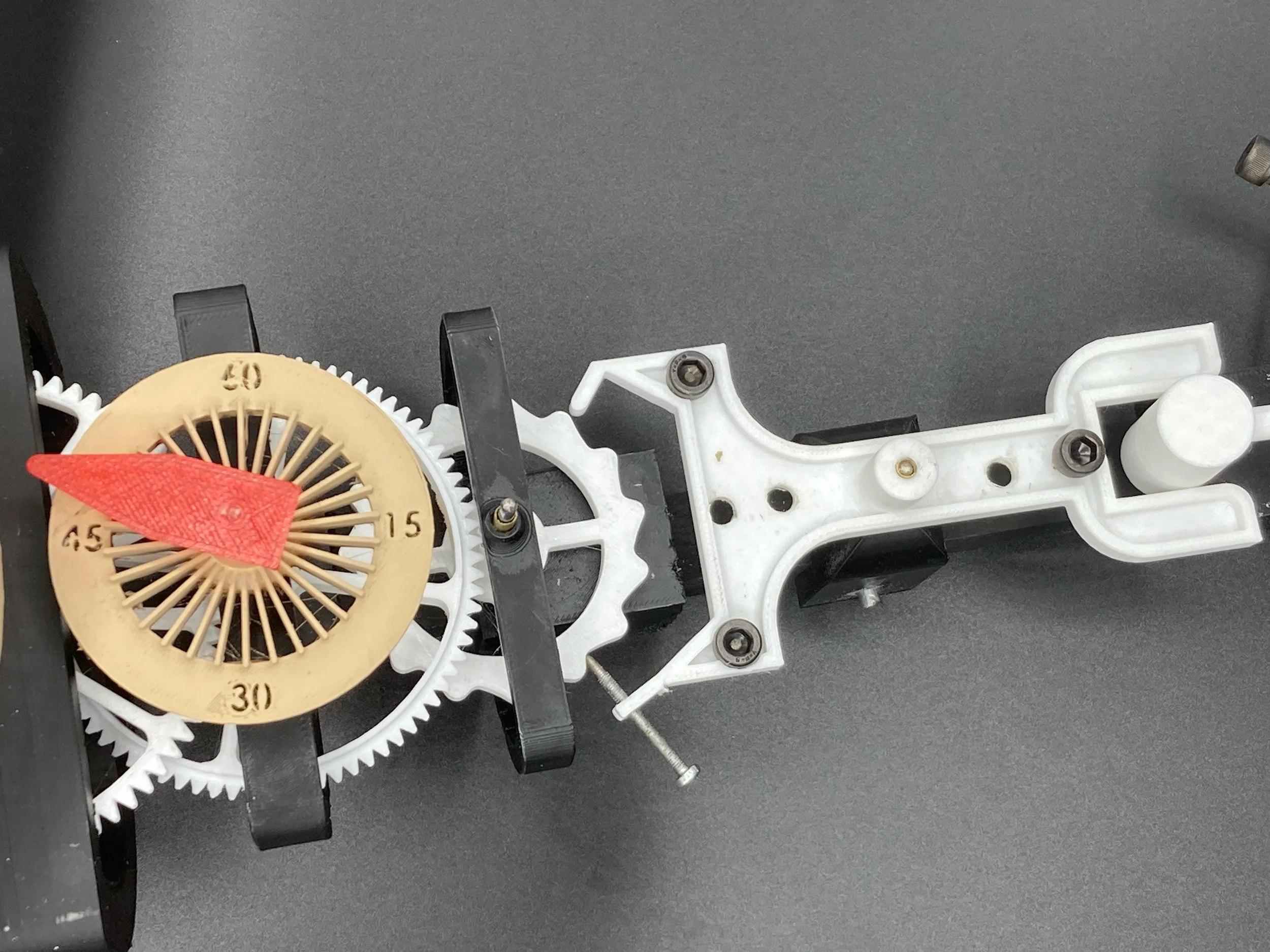STEM Outreach - How I Built a Device for STEM Education
During my time operating the Machining Blog business, I have visited a few schools. I noticed one thing that was the same about their programs, and that was their 3D printers were just used to produce trinkets and not mechanical parts. I decided to create a project that could create many learning opportunities from it, and that project was to design and build a mechanical clock. The clock that I designed was based on a mechanical watch design, but I scaled the part size up by six times their actual size. I started the project by reading books on watch design and by taking apart watch movements. I learned along the way and then started designing watch movement parts in Solidworks CAD software. I then purchased a small 3D printer and started printing the parts. Once the gears started to mesh properly, I built a few prototypes along the way. With all my time that I invested in the project, it probably amounted to a couple thousand hours. The result was a clock that is pretty accurate for being printed, not machined.
The clock was built to demonstrate STEM to the younger generation. I used Science, Technology, Engineering, and Math to create the result. That along with a knowledge of how things work and how to work with basic tools and equipment. Even though it operates, there are many areas to continuously improve on it. I see the need to further develop 3D printed springs to power the device. Those mainsprings that I printed failed in testing after a few uses. To power the device currently, I am using a spring for a drill press quill return, but developing a power spring that will last for a few thousand uses from 3d printed material is the goal for the future.
I plan on taking my device to schools to show what I built and demonstrate how I used STEM to create it. The project is an example of manufacturing with engineering and prototyping custom parts. I have spent twenty-four years working in manufacturing and made thousands of different prototype parts for new product development. Even though an employee may not be making devices like mine in industry, they can make innovative products and devices used in many different industries.






